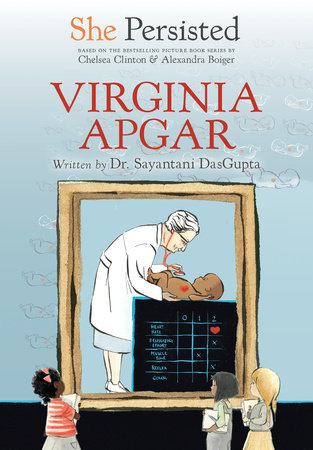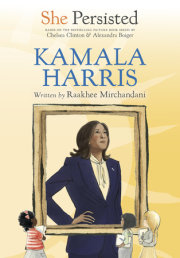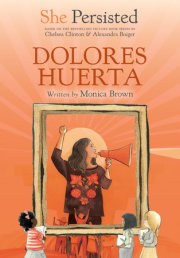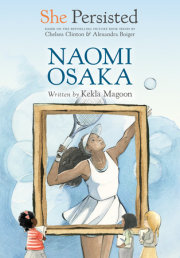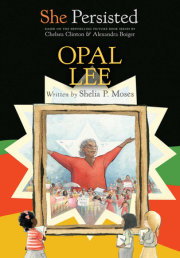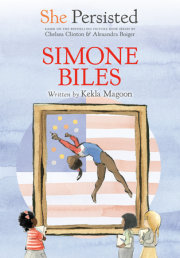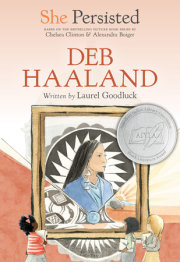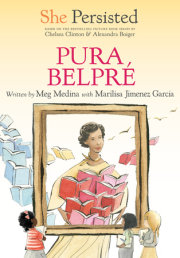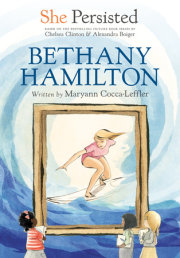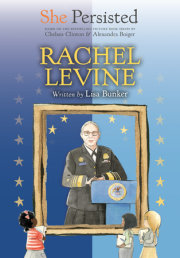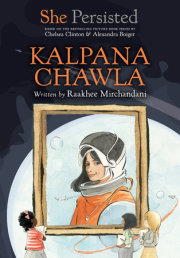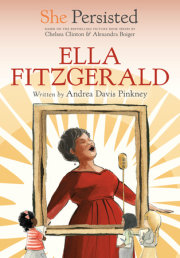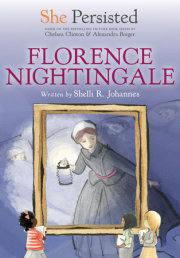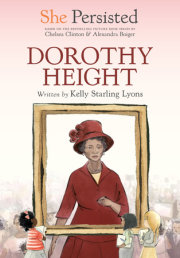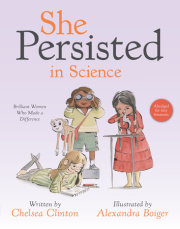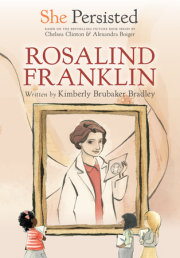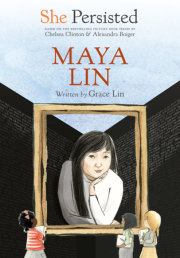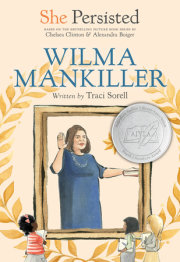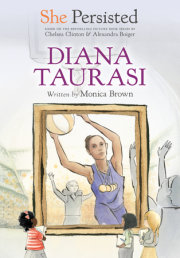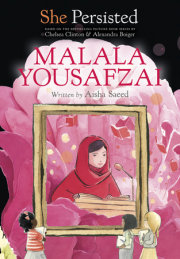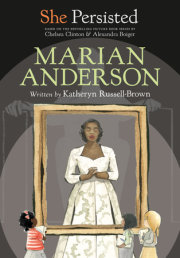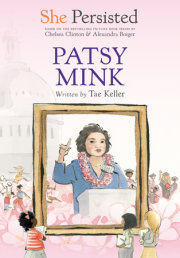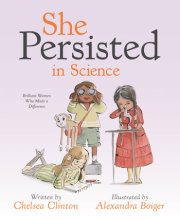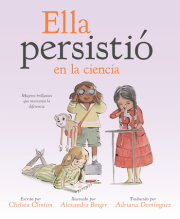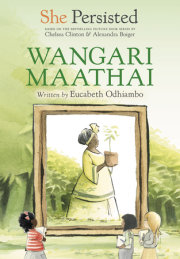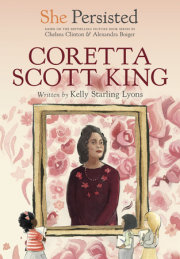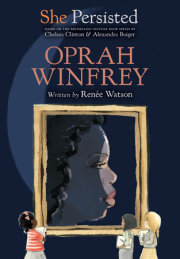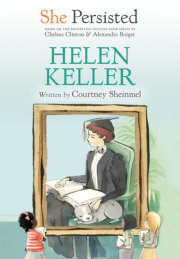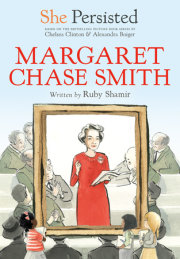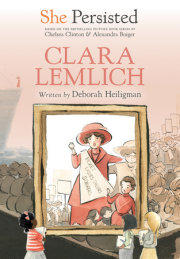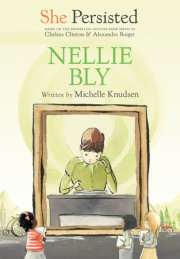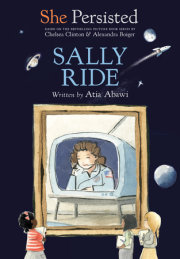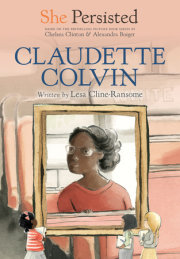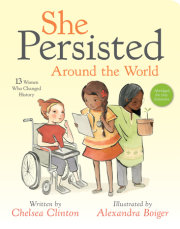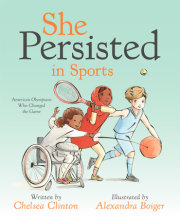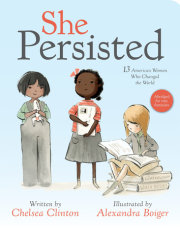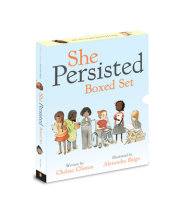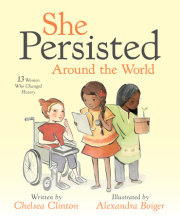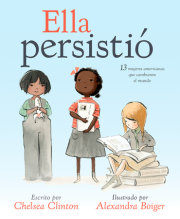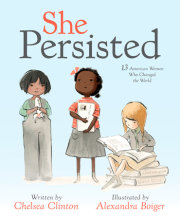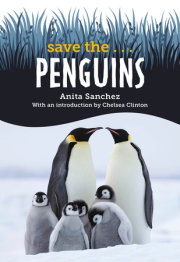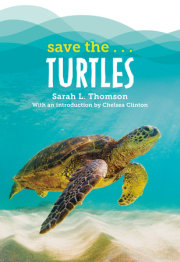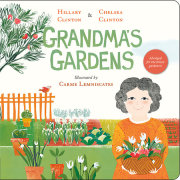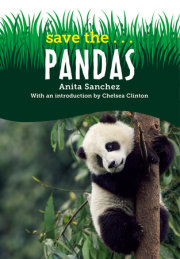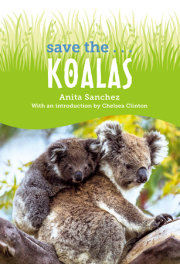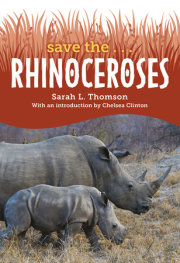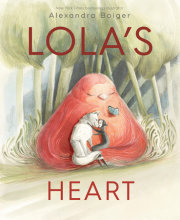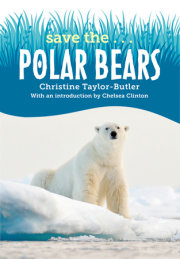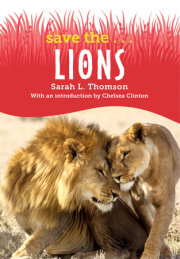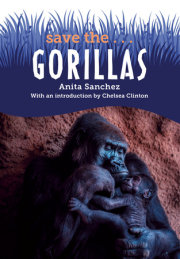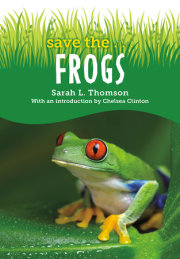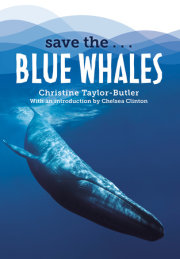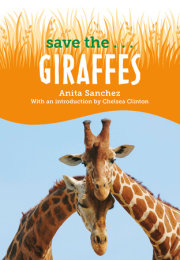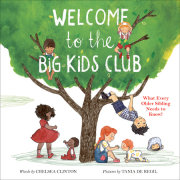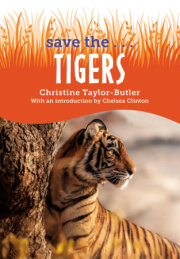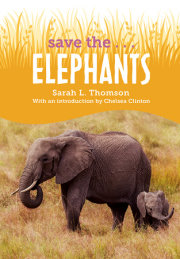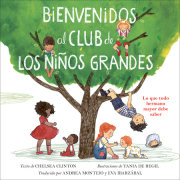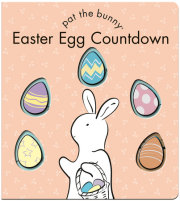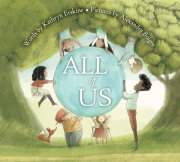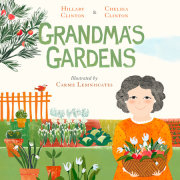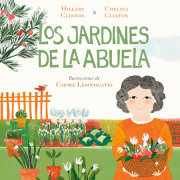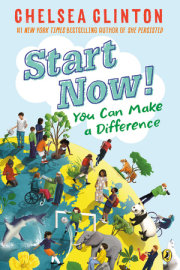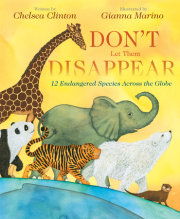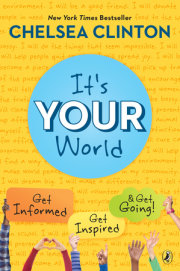In this chapter book biography by bestselling author and physician Sayantani DasGupta, readers learn about the amazing life of Virginia Apgar--and how she persisted.
There weren't many women who tried to become doctors when Virginia Apgar went to medical school--but she didn't let that stop her. After a professor discouraged from becoming a surgeon, she became an anesthesiologist instead and created the famous Apgar test to check the health of newborn babies. It's a test that's still used in hospitals across the world today!
Complete with an introduction from Chelsea Clinton, black-and-white illustrations throughout, and a list of ways that readers can follow in Virginia Apgar's footsteps and make a difference! A perfect choice for kids who love learning and teachers who want to bring inspiring women into their curriculum.
And don’t miss out on the rest of the books in the She Persisted series, featuring so many more women who persisted, including Sally Ride, Temple Grandin, and more!
Praise for She Persisted: Virginia Apgar:
"A fast-paced tale that will spark curiosity—Dr. Apgar would approve." —Kirkus Reviews
"Equally appealing for report writers and readers looking for role models." —Booklist
"A fast-paced tale that will spark curiosity—Dr. Apgar would approve." —Kirkus Reviews
"Equally appealing for report writers and readers looking for role models." —Booklist
As Sally Ride and Marian Wright Edelman both powerfully said, “You can’t be what you can’t see.” When Sally Ride said that, she meant that it was hard to dream of being an astronaut, like she was, or a doctor or an athlete or anything at all if you didn’t see someone like you who already had lived that dream. She especially was talking about seeing women in jobs that historically were held by men.
I wrote the first She Persisted and the books that came after it because I wanted young girls—and children of all genders—to see women who worked hard to live their dreams. And I wanted all of us to see examples of persistence in the face of different challenges to help inspire us in our own lives.
I’m so thrilled now to partner with a sisterhood of writers to bring longer, more in-depth versions of these stories of women’s persistence and achievement to readers. I hope you enjoy these chapter books as much as I do and find them inspiring and empowering.
And remember: If anyone ever tells you no, if anyone ever says your voice isn’t important or your dreams are too big, remember these women. They persisted and so should you.
Warmly,
Chelsea Clinton
TABLE OF CONTENTS
Chapter 1: A Busy Bee
Chapter 2: One of Nine
Chapter 3: Twice as Good
Chapter 4: Making History
Chapter 5: Marching Forward
Chapter 6: Touching the Lives of Millions
How You Can Persist
References
Chapter 1
A Busy Bee
Virginia “Ginnie” Apgar was born on June 7,1909, in Westfield, New Jersey, into a family that, in her own words, “never sat down.” This go-go-go quality would define the rest of her amazing life.
Virginia’s father, Charles Apgar, was a salesman—of cars and insurance. But Charles’s real love was inventing things. He spent hours doing experiments on radio waves with his wireless telegraph and building his own telescope in his basement laboratory. He also taught Virginia to read when she was only three years old. Reading was a family passion for the Apgars, as was music. Virginia started taking violin lessons when she was six, and she and her older brother Lawrence played family concerts with their parents.
Due to Charles often changing jobs, the Apgar family was not very well off. They lived modestly, and sometimes had to take paying lodgers who rented rooms in their home to make ends meet. Yet, as a family friend once noted, “[The family had] the respect . . . of all who know them.”
Even though Virginia never met a woman physician when she was young, she knew she wanted to study medicine from a very early age. Her friend Joan Beck remembers, “She always told interviewers she couldn’t remember a time in her life when she wasn’t intent on going into medicine.” Maybe she was inspired by her father’s amateur scientific work. Maybe she was motivated by the stories she heard about her eldest brother, who died from a disease called tuberculosis before she was born. Or maybe she was inspired by her older brother Lawrence, who suffered from chronic eczema, an itchy skin condition that needed many doctor appointments throughout his life.
Virginia’s busy high school schedule shows that her life as a fast talker, fast thinker and fast mover started early on. One of her senior yearbook quotes reads, “Time was precious to her and her mind and hands were never still.” Virginia was a member of the orchestra, debate club, basketball team, tennis and track teams. She collected stamps, taught herself Greek and was interested in higher mathematics. She was an excellent science student, but didn’t do well in home economics—a class that many high schoolers, especially girls, used to have to take to learn cooking, cleaning, ironing and sewing. Supposedly, Virginia never learned to cook, and later in her life, she would be quoted as saying that she never married because “I haven’t found a man who can cook.”
In her yearbook, next to her senior picture, another quote reads “The industry of the bee is second only to that of Virginia . . . Frankly, how does she do it?” And guess who, in the class catalogue, was elected “most studious”? That’s right! Our own Ginnie Apgar!
About
In this chapter book biography by bestselling author and physician Sayantani DasGupta, readers learn about the amazing life of Virginia Apgar--and how she persisted.
There weren't many women who tried to become doctors when Virginia Apgar went to medical school--but she didn't let that stop her. After a professor discouraged from becoming a surgeon, she became an anesthesiologist instead and created the famous Apgar test to check the health of newborn babies. It's a test that's still used in hospitals across the world today!
Complete with an introduction from Chelsea Clinton, black-and-white illustrations throughout, and a list of ways that readers can follow in Virginia Apgar's footsteps and make a difference! A perfect choice for kids who love learning and teachers who want to bring inspiring women into their curriculum.
And don’t miss out on the rest of the books in the She Persisted series, featuring so many more women who persisted, including Sally Ride, Temple Grandin, and more!
Praise for She Persisted: Virginia Apgar:
"A fast-paced tale that will spark curiosity—Dr. Apgar would approve." —Kirkus Reviews
"Equally appealing for report writers and readers looking for role models." —Booklist
Praise
"A fast-paced tale that will spark curiosity—Dr. Apgar would approve." —Kirkus Reviews
"Equally appealing for report writers and readers looking for role models." —Booklist
Author
Excerpt
As Sally Ride and Marian Wright Edelman both powerfully said, “You can’t be what you can’t see.” When Sally Ride said that, she meant that it was hard to dream of being an astronaut, like she was, or a doctor or an athlete or anything at all if you didn’t see someone like you who already had lived that dream. She especially was talking about seeing women in jobs that historically were held by men.
I wrote the first She Persisted and the books that came after it because I wanted young girls—and children of all genders—to see women who worked hard to live their dreams. And I wanted all of us to see examples of persistence in the face of different challenges to help inspire us in our own lives.
I’m so thrilled now to partner with a sisterhood of writers to bring longer, more in-depth versions of these stories of women’s persistence and achievement to readers. I hope you enjoy these chapter books as much as I do and find them inspiring and empowering.
And remember: If anyone ever tells you no, if anyone ever says your voice isn’t important or your dreams are too big, remember these women. They persisted and so should you.
Warmly,
Chelsea Clinton
TABLE OF CONTENTS
Chapter 1: A Busy Bee
Chapter 2: One of Nine
Chapter 3: Twice as Good
Chapter 4: Making History
Chapter 5: Marching Forward
Chapter 6: Touching the Lives of Millions
How You Can Persist
References
Chapter 1
A Busy Bee
Virginia “Ginnie” Apgar was born on June 7,1909, in Westfield, New Jersey, into a family that, in her own words, “never sat down.” This go-go-go quality would define the rest of her amazing life.
Virginia’s father, Charles Apgar, was a salesman—of cars and insurance. But Charles’s real love was inventing things. He spent hours doing experiments on radio waves with his wireless telegraph and building his own telescope in his basement laboratory. He also taught Virginia to read when she was only three years old. Reading was a family passion for the Apgars, as was music. Virginia started taking violin lessons when she was six, and she and her older brother Lawrence played family concerts with their parents.
Due to Charles often changing jobs, the Apgar family was not very well off. They lived modestly, and sometimes had to take paying lodgers who rented rooms in their home to make ends meet. Yet, as a family friend once noted, “[The family had] the respect . . . of all who know them.”
Even though Virginia never met a woman physician when she was young, she knew she wanted to study medicine from a very early age. Her friend Joan Beck remembers, “She always told interviewers she couldn’t remember a time in her life when she wasn’t intent on going into medicine.” Maybe she was inspired by her father’s amateur scientific work. Maybe she was motivated by the stories she heard about her eldest brother, who died from a disease called tuberculosis before she was born. Or maybe she was inspired by her older brother Lawrence, who suffered from chronic eczema, an itchy skin condition that needed many doctor appointments throughout his life.
Virginia’s busy high school schedule shows that her life as a fast talker, fast thinker and fast mover started early on. One of her senior yearbook quotes reads, “Time was precious to her and her mind and hands were never still.” Virginia was a member of the orchestra, debate club, basketball team, tennis and track teams. She collected stamps, taught herself Greek and was interested in higher mathematics. She was an excellent science student, but didn’t do well in home economics—a class that many high schoolers, especially girls, used to have to take to learn cooking, cleaning, ironing and sewing. Supposedly, Virginia never learned to cook, and later in her life, she would be quoted as saying that she never married because “I haven’t found a man who can cook.”
In her yearbook, next to her senior picture, another quote reads “The industry of the bee is second only to that of Virginia . . . Frankly, how does she do it?” And guess who, in the class catalogue, was elected “most studious”? That’s right! Our own Ginnie Apgar!
Related Articles
Notifications






